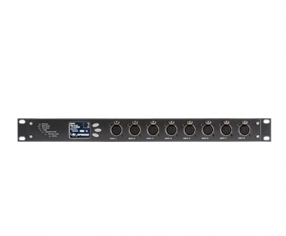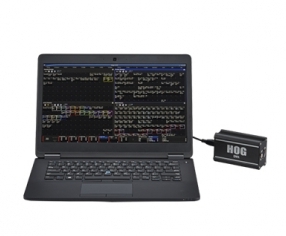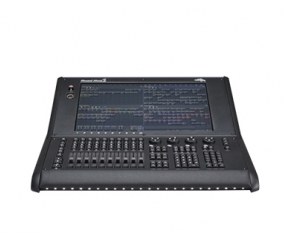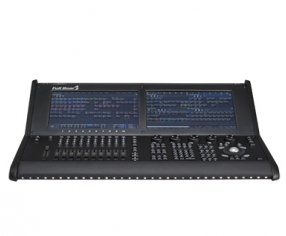Following the close of production of blockbuster-to-be Fantastic Four, Ant-Man wrapped shooting in December; both movies featured the talents of moving light programmer Scott Barnes and his Hog 4 lighting control system. Fantastic Four is slated for release on August 7th, while Ant-Man will hit theaters on July 17th. 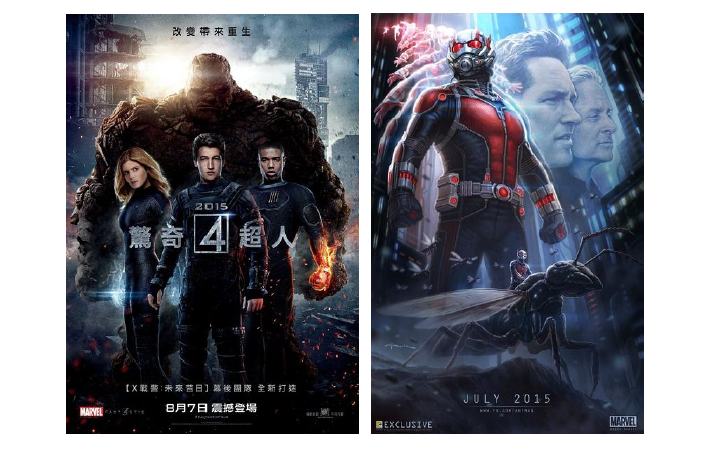 Following the close of production of blockbuster-to-be Fantastic Four, Ant-Man wrapped shooting in December; both movies featured the talents of moving light programmer Scott Barnes and his Hog 4 lighting control system. Fantastic Four is slated for release on August 7th, while Ant-Man will hit theaters on July 17th.
Following the close of production of blockbuster-to-be Fantastic Four, Ant-Man wrapped shooting in December; both movies featured the talents of moving light programmer Scott Barnes and his Hog 4 lighting control system. Fantastic Four is slated for release on August 7th, while Ant-Man will hit theaters on July 17th.
A bevy of Hog control products were used on Fantastic Four, including two Hog 4 consoles, one Road Hog 4, one Nano Hog 4 PC, three Hog PC Servers, three DP8Ks and two Tablet PC Hog4 Remotes. On the set were Console Programmer Scott Barnes, Director of Photography Matt Jensen, Chief Lighting Technician (gaffer) Erik Messerschmidt, Assistant CLT Andrew Korner, Supervising Chief Rigging Electrician Jeff Soderberg, Technical Supervisor Mike Visencio, and 2nd Unit Console Programmers Josh Thatcher and Elton James.
Fantastic Four was the largest iteration of Hog control on his sets to date, and allowed Barnes and the team to push the boundaries of communication via Art-Net. The shoot also saw Barnes and Thatcher pioneering the use of tablet PCs with the Hog 4 to streamline work on movie sets. Barnes comments, “It was definitely more Art-Net than I’ve done before - we used our typical configuration with multiple stages networked together. I have an Hog PC system with an 8K on each stage, all tied into the stage’s infrastructure network; I piggybacked on that and communicated with any of the servers using a tablet or the console. We had a lot of interactive lighting throughout the entire movie - movers, LEDs, and a lot of pixel mapping. The characters often manipulate light and there was a lot of effects lighting happening everywhere, so we needed Hog 4’s ability to quickly achieve those effects, but also we utilized the FixtureNet port and strung Art-Net all throughout the rig. This allowed us to connect the console in many different places."
On Marvel's new Ant-Man, a similarly elaborate control system was employed, but according to Scott was a more straightforward project compared to Fantastic Four. Barnes' title on the set was LCP, or Lighting Console Programmer, a title the local union established for programmers in TV and film. Barnes explains, "Josh Thatcher did all the prep work for me on Ant-Man, so I could finish up Fantastic Four and also go home for a couple of weeks. He and technician Rob Russell installed all the Hog 4 servers and DP8000s, along with receiving my consoles and setting them up as well. An interesting note, this was the very first show to use the brand new Pinewood Studios Atlanta, located in Peachtree City, GA. It's a brand new state-of-the-art movie studio. At the time of Ant-Man, they only had five stages built for us. Phase 2 of the studio expansion is almost complete, which brings the stage count to ten. When all the phases are complete, that lot will have thirty-three stages. It is my understanding that Marvel plans to shoot at least three or four more films there."
Barnes continues: "I mention the studio because my standard procedure is to network all the Hog servers together, and the network infrastructure is very good at Pinewood. They have conveniently placed network wall ports around the stages. This gives me easy access for my console to connect to the installed Hog servers on each stage. The studio separates an IP range that is exclusive for HogNet. With all the devices on the same network, each of the consoles or tablets can connect to any of the stages. This system has become a standard in the industry.
"There are many others who are using Hog 4 now because of the easy and creative ways you can network multiple consoles together. We even throw a network hard drive on the Hognet that allows us to keep all the backup files in one place. So Josh left after I arrived, just before shooting began. The Director of Photography was Russell Carpenter, who won an Oscar for Titanic. The Chief Lighting Technician was Len Levine. The last time I worked with these two was on the movie 21. Our rigging gaffer was DJ Lootens, who I have done numerous shows with and am about to start the next Marvel film with."
Scott says that despite having control of most everything they used, there weren't very many lighting effects in Ant-Man. "We had one simple flash gag for when Ant-Man grows and shrinks, but it was nothing more than a bump of some Studio Force D fixtures. And there was one scene with small movers swinging around and some Color Force fixtures scattered here and there. However, there were many sets that were very traditional, more like a sitcom or a theatrical rig. On one stage we built the Pym house and rigged it with tons of Source 4's and PAR cans. For this set, Russell and Len were changing levels constantly for these lights, so I decided to throw Intensity Palettes onto the Command keys to give me even faster ability to change levels for them. That was a nice use of the Command keys.
Asked about networking and the science of controlling lighting for film, Barnes says, "Time truly is money on motion pictures, and networking the stages saves production a ton of time. The advantage to Hog's networking capabilities is the ability to have multiple shows running on one network. Each stage has it's own simple HogPC system and a DP8000 that stays on that stage throughout the entire production. Each Server Station, as we call them, is dedicated a different port number that reflects the stage number it is on. So Stage 5 would be on port 6605, and so forth. With the stages networked together, I am able to achieve things like testing one stage while I am on another. Obviously if it's movers, I would want to see what they are doing, so my tech could do this with a tech console or tablet, but for everything else, I have control from anywhere I am located and prep my show file as I want.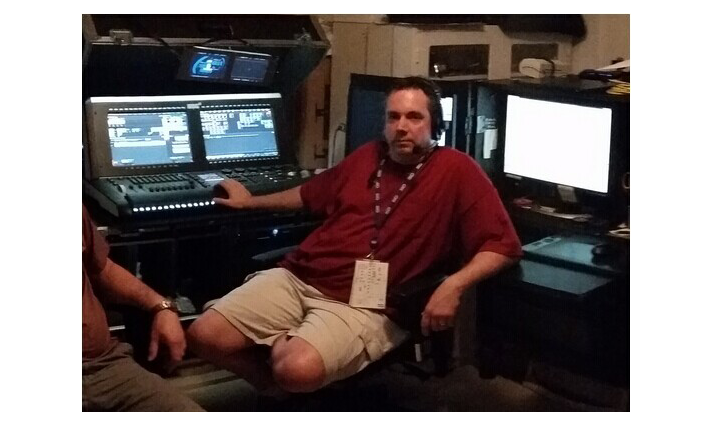 "Another thing networking helps with is stage moves. Many times on these shows, we start our day on one stage and then move to another stage to finish our day. Without networking, they would have to wait on me to blackout the first stage, shut down the console, move to the second stage, hook up, boot up, and then turn on those lights. That takes time... and time is money. They could also rent another console, but with multiple stages, that can be very expensive and actually a little overkill. After all, we don't need to do any real programming. We just need to be able to turn stuff on or off at the time. With networking, I can turn on the second stage before I even leave the first. Then, when the crew has completely moved to the second stage, I can log on to that stage and turn it off. No one waits for me this way, and I can move to the other stage without being in a big hurry. Also, having control of every stage from anywhere means that anytime a director or other important figure wants to walk over to another stage to look around, I can turn whatever they want on without having to leave my place on the stage. It also helps that the console's speed at logging off and on to shows is lightning quick. When there's actual programming that needs to be done on more than one stage, for things like 2nd unit shooting and such, then it's time to have an actual second console running with another programmer involved."
"Another thing networking helps with is stage moves. Many times on these shows, we start our day on one stage and then move to another stage to finish our day. Without networking, they would have to wait on me to blackout the first stage, shut down the console, move to the second stage, hook up, boot up, and then turn on those lights. That takes time... and time is money. They could also rent another console, but with multiple stages, that can be very expensive and actually a little overkill. After all, we don't need to do any real programming. We just need to be able to turn stuff on or off at the time. With networking, I can turn on the second stage before I even leave the first. Then, when the crew has completely moved to the second stage, I can log on to that stage and turn it off. No one waits for me this way, and I can move to the other stage without being in a big hurry. Also, having control of every stage from anywhere means that anytime a director or other important figure wants to walk over to another stage to look around, I can turn whatever they want on without having to leave my place on the stage. It also helps that the console's speed at logging off and on to shows is lightning quick. When there's actual programming that needs to be done on more than one stage, for things like 2nd unit shooting and such, then it's time to have an actual second console running with another programmer involved."
Both Fantastic Four and Ant-Man recently wrapped their reshoots. Barnes was unable to participate as he was already committed to the next Marvel project. Ant-Man reshoots had LCP Gideon Markham on a Full Boar 4. Fantastic Four reshoots were done in Los Angeles and Louisiana, with Markham and his Full Boar in L.A., and LCPs Cody Banks and Kyle Boorman using a full size Hog 4 in Louisiana.

Scott Barnes Uses Hog 4 On Major Film Releases
Back


